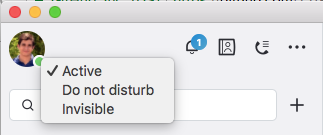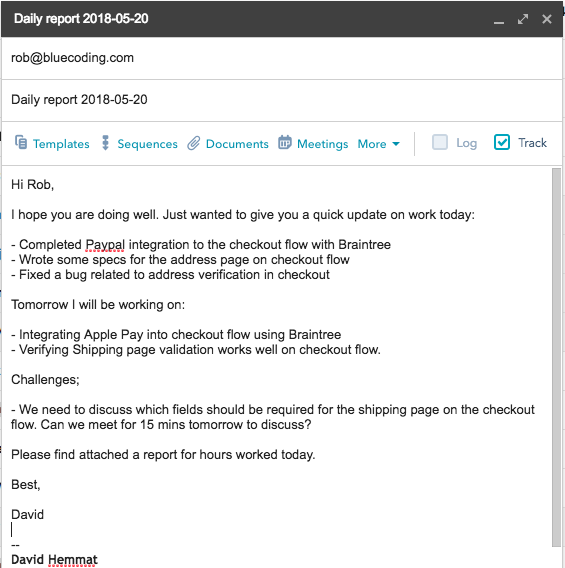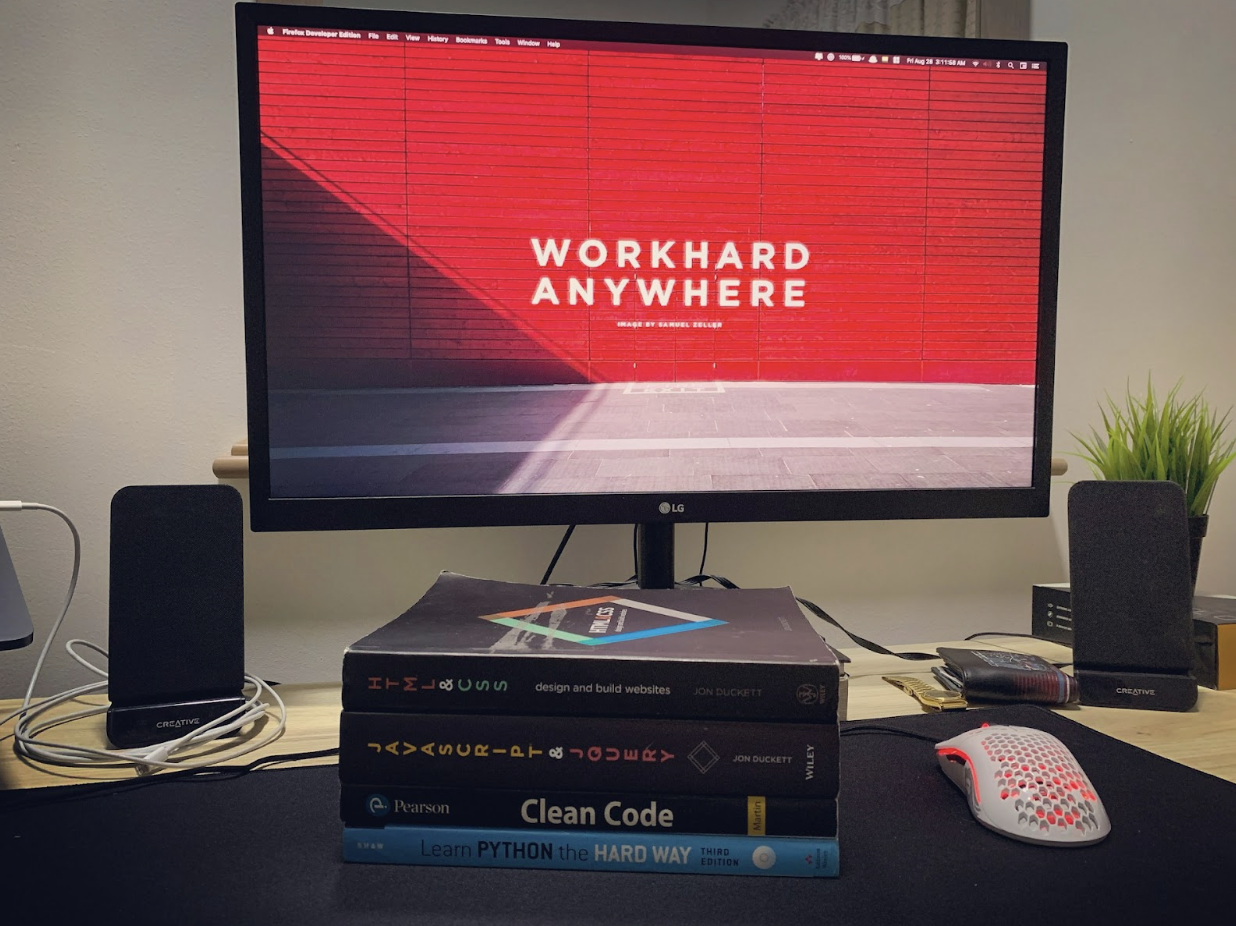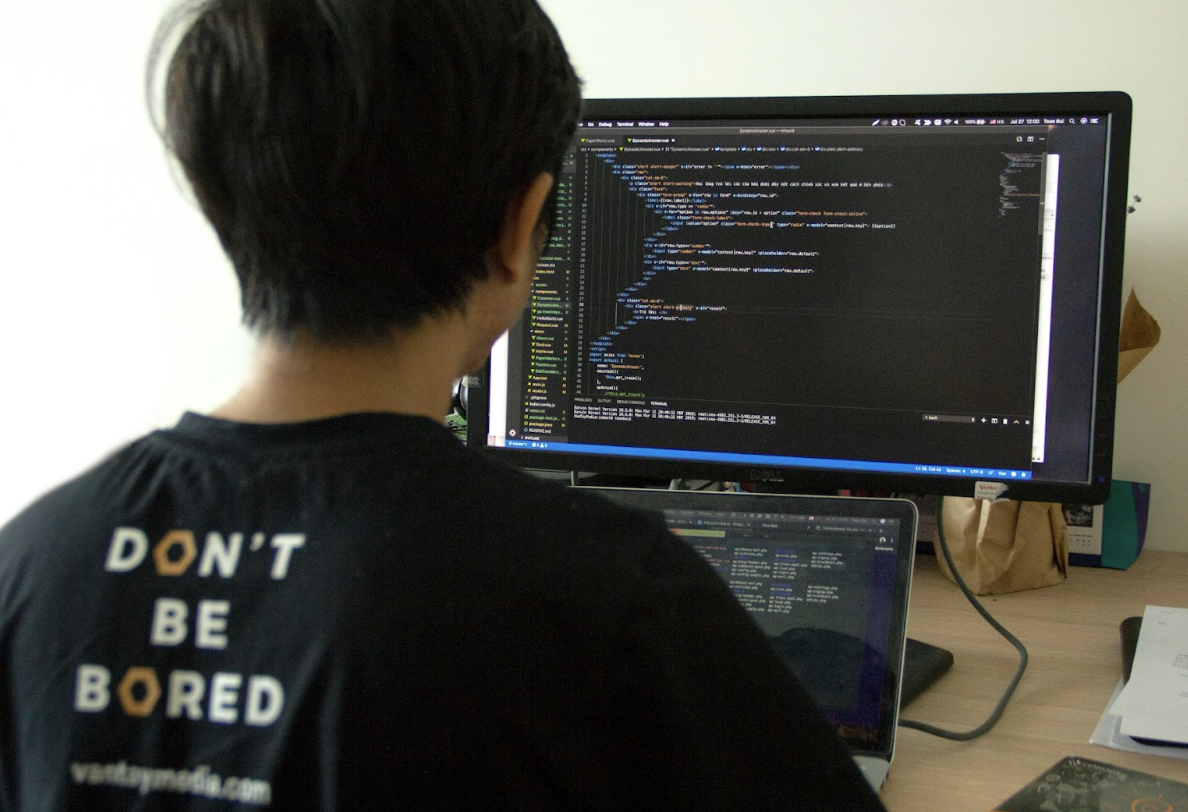 News
News
Last week we started our “Becoming a top developer series” with our first post: Be Reachable.
We're following up with the second part of our series, discussing a second trait that we have found incredibly important for remote developers: being visible.
9 to 5 schedules are commonplace in office spaces across the world (although the exact times may vary from country to country), and serve several purposes for the companies that implement them. They provide a common timeframe for teams that need to work in tandem, provide a measure to the amount of work that can get done in a certain time period, and presumably help maintain a work-life balance by limiting when the day ends. One of the most important functions of the 9 to 5 schedule, however, is giving visibility to employees. In many companies, employees are judged by their punctuality in the mornings and their willingness to stay after the workday is over if necessary. As long as you are typing away and are able to close your Reddit tab in time when the boss walks in the room, being in the same physical space for a certain period of time gives everyone else on the team the impression that you are getting things done. While this might not improve productivity in any way, the key concept, visibility, is very important. If your team doesn’t feel like you are working, then you might as well not be.
How To Be Visible
Remote work increases the visibility challenge for team members. You could be a top performer in your organization and not get any credit for your work if your team is not aware of it. Your visibility in the team is not only important so that you get credit for your work, but it is also instrumental in helping your team make the right choices for assigning and distributing work, as well as making all sorts of decisions that could impact the whole organization.
As a remote worker, even if you are working a fixed schedule (many organizations that hire remote workers do have schedules, even if the team is not on site), visibility will be a challenge. You’ll need to make adjustments to the way you present your work and yourself to ensure that you have good visibility.
Ok, so visibility is important. How do I become visible?
Being visible is not difficult, you just need to take the right steps to ensure that your team can see what you’ve been up to. Here are some of the things we recommend.
Status: Online
In last week’s post, we discussed being reachable as a requirement for becoming a top remote developer. Being reachable, however, is useless if people don’t know that they can reach you easily. Make sure that during your work hours your team can see that you are online. Set your Skype status to online, open your chat app and keep your phone on.

Say “Hi!” and “Bye!”
One of the best ways to get your team to acknowledge your presence is by letting them know when you arrive at work (sit down at your home office desk) and leave for lunch (down the hallway). This is as simple as saying: “Hi team, wish you all a productive Monday!” or “Hey, I’m here FYI” if you are feeling less friendly. When leaving for lunch, or the end of the day, just let your team know: “Going for lunch, I’ll be back in an hour”. It’s especially important to let your team know if you’re going to break your regular schedule: “something came up, I need to step out for a moment, I’ll be AFK for about 30 mins”.

Commit and push continuously
As developers, we might find ourselves working on a specific feature or bug for a few days. Don’t wait until you’re done to push. Create a new branch on Git and commit to as you make progress. Your commits don’t need to be completed pieces of work, they can simply show progress. Push your branch to Github (or your service of choice) every time you commit. Create a pull request and market as WIP (Work in progress). The idea is that everyone on your team can now see what you are working on and doesn’t have to be guessing as to the status of the feature that is due on Friday.
Log your time
Depending on your organization or clients, you may be asked to log the time you spent working on different items during the day. At Blue Coding we ask that our developers log their time live as they work. Some companies ask that you do it once you complete a task, and people who work through Upwork are often forced to log it with screenshots included (we really don’t like this, but that is a topic for another day). There are tons of time tracking tools out there, and even if nobody is asking you to log your time, it’s good practice. Your time logs will often be used by your company to create a relationship between time spent and tasks completed, so they are an important indicator of productivity to your employer or clients.
The important thing about logging time is to do it as soon as possible, with enough information to make the logs useful. Don’t wait until the end of the week when you forgot what you were working on, log your time live if possible to ensure that you can register the most accurate information. Some organizations review time logs once a month, some once a week and some check on it every day. Either way, logging time is an important tool for keeping your work visible.
Daily and weekly reports
One of our favorite tools to ensure that both team members and clients are aware of our work are simple email reports that we send out on a daily and weekly basis. Our developers are required to send out a simple daily report that outlines what they did during the day, what challenges they faced and what they expect to be working on tomorrow. We also attach time reports from the hours that we logged. Depending on your team, you could do this either on a daily or a weekly basis.

That’s not all folks.
There are tons of other things that you could do to increase your visibility as a remote developer and we, of course, can’t cover it all in this article. Each team is different, each employer and client will value different things. Be creative in the way you communicate and find subtle ways to let your team know that you are working with them to make a difference.
Follow us on Facebook, LinkedIn, and Twitter if you want to be the first to know once our next article is out!



